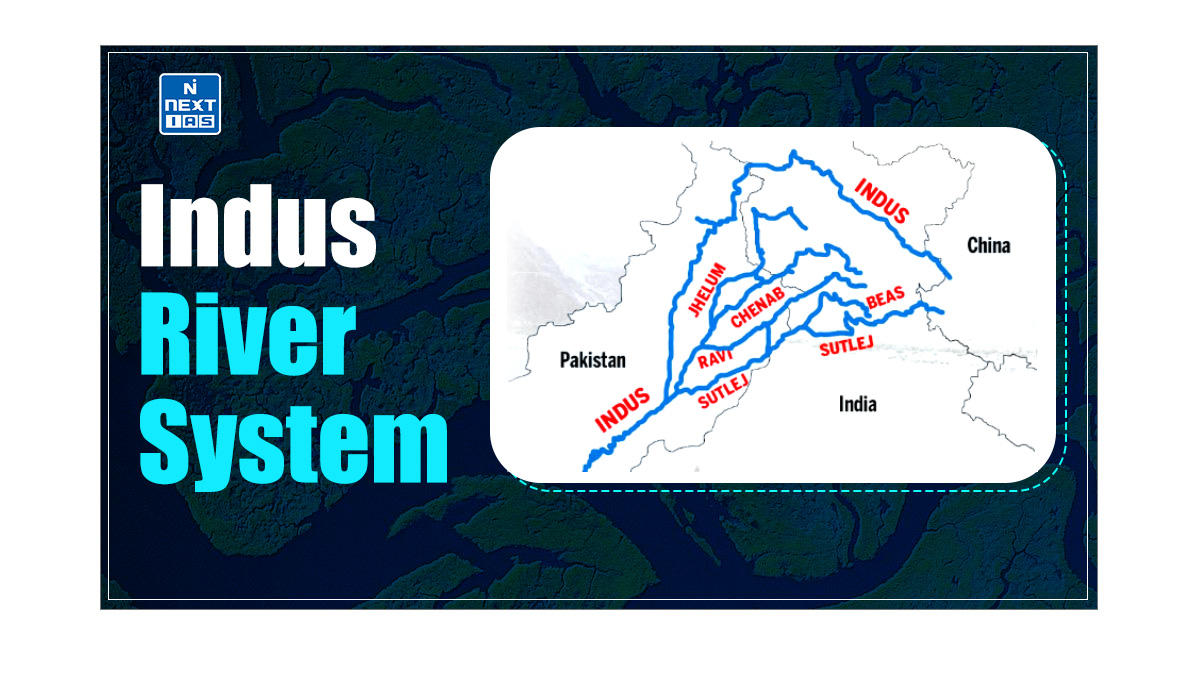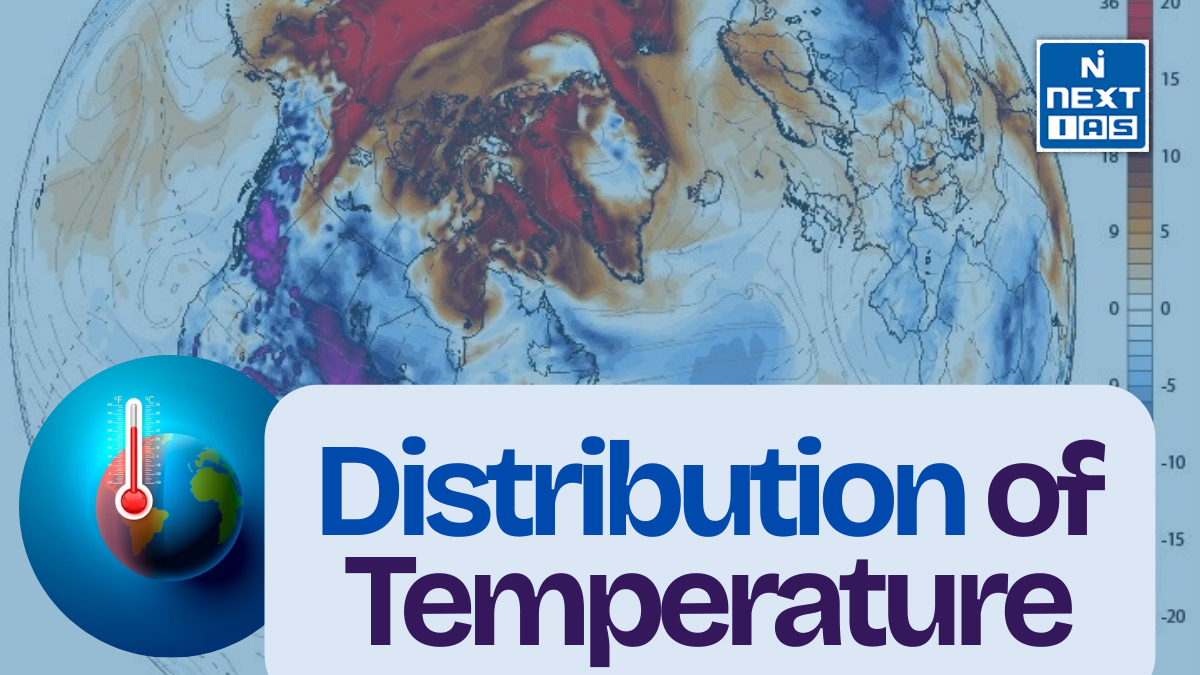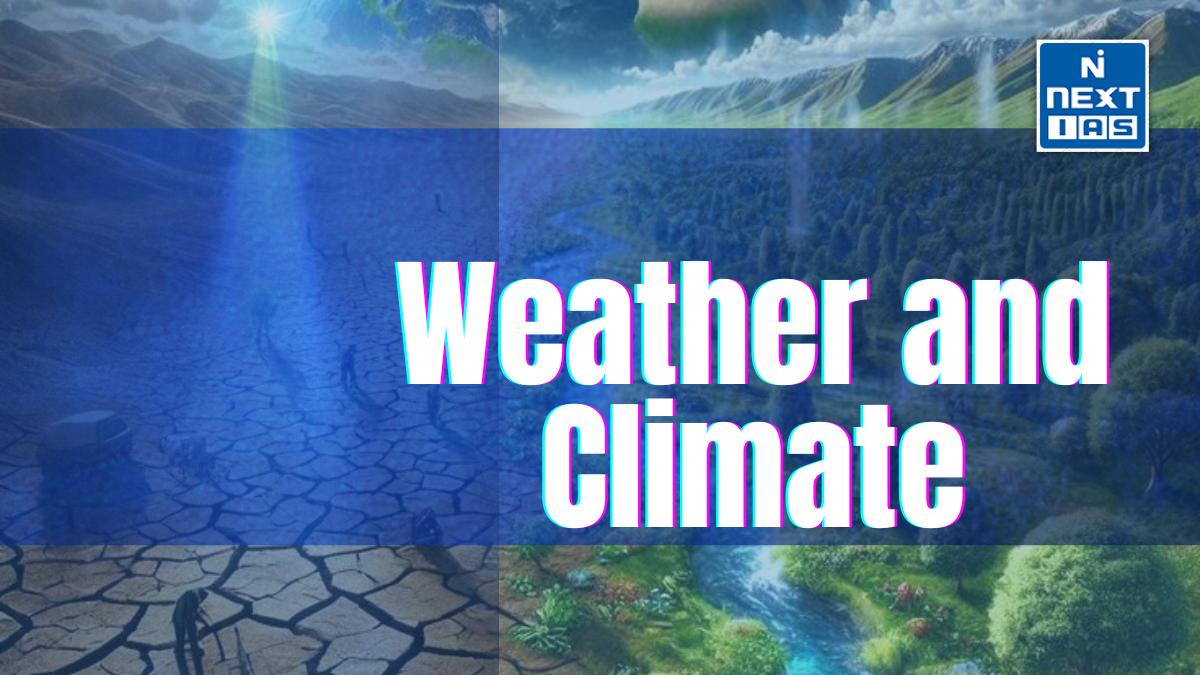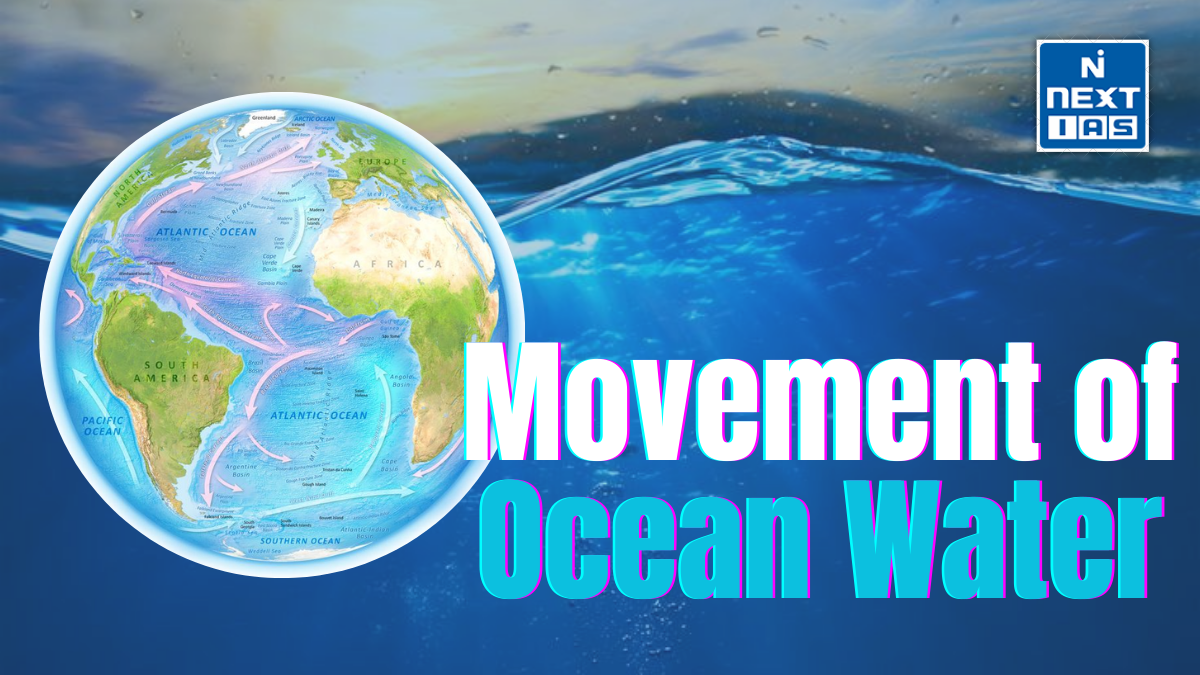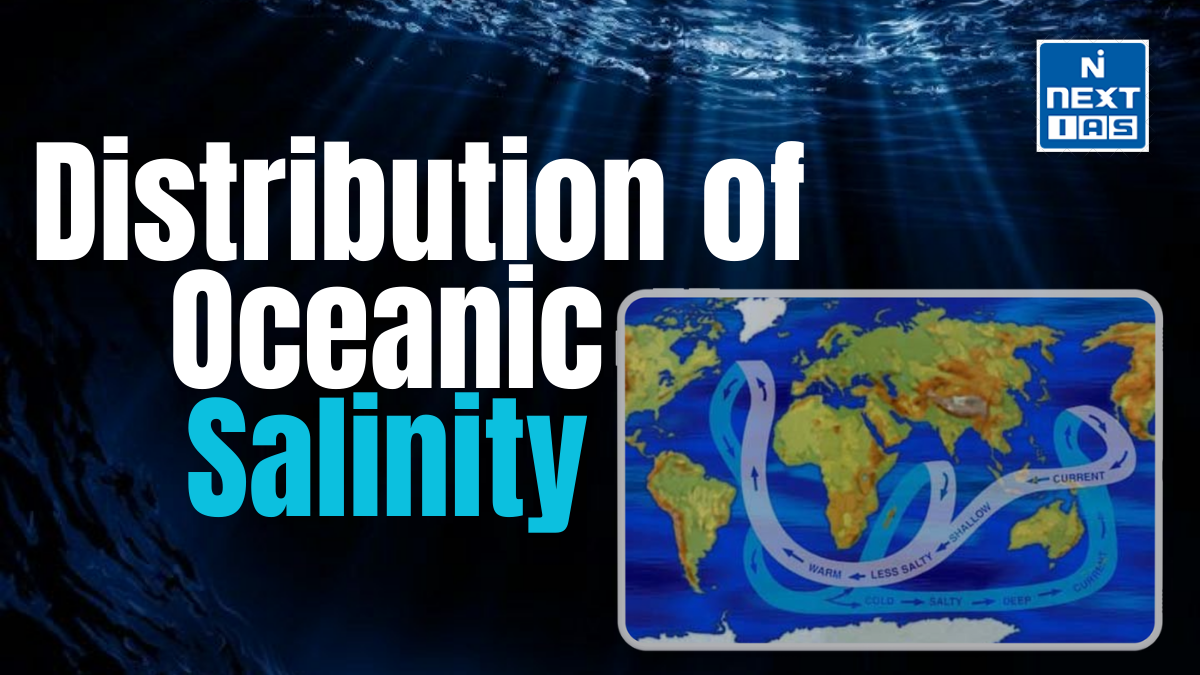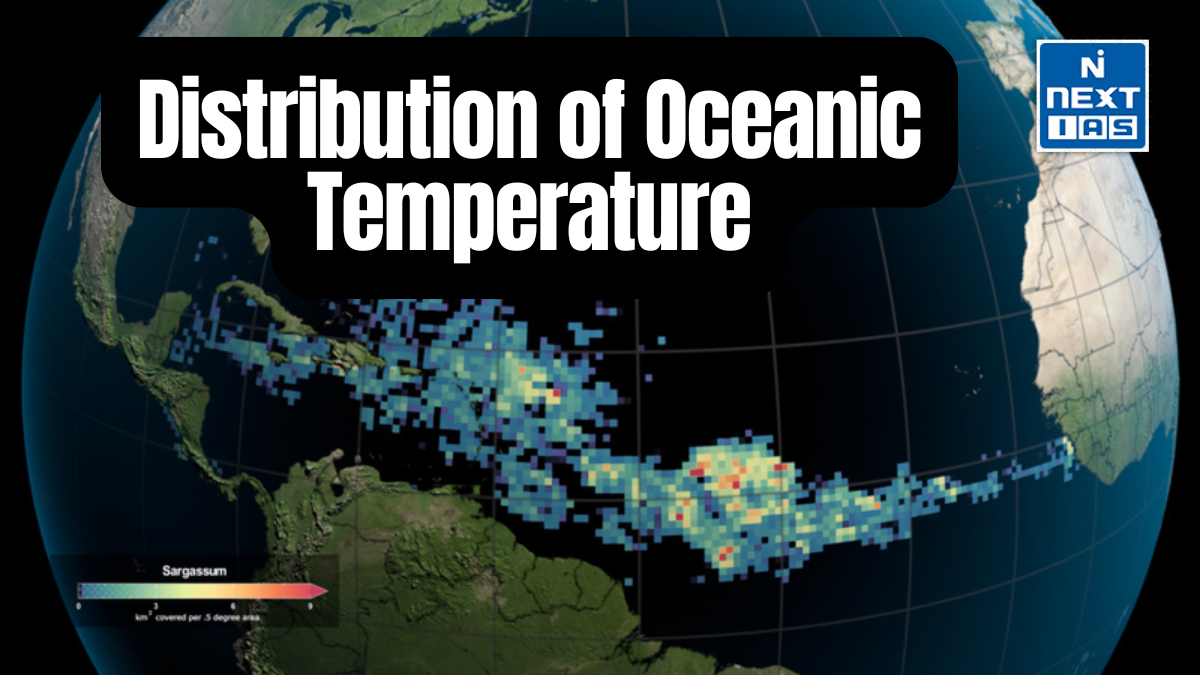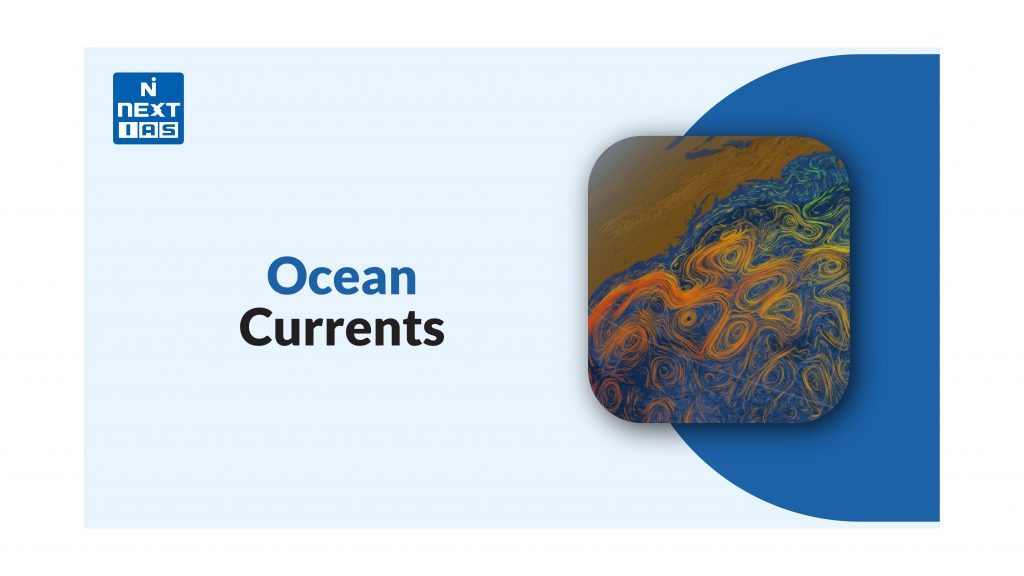
Ocean currents are continuous, directed movements of seawater driven by factors like wind, Earth’s rotation, temperature, and salinity differences. They play a crucial role in regulating climate, distributing heat, and supporting marine life by transporting nutrients across vast distances, significantly influencing both local and global ecosystems.
What are the Ocean Currents?
- Ocean currents are large-scale flows of seawater that move continuously through the world’s oceans.
- These currents are primarily driven by wind, Earth’s rotation (Coriolis effect), differences in water temperature and salinity, and the gravitational forces exerted by the moon and sun. They can be classified into two types: surface currents and deep-water currents.
- Surface currents are driven by the wind and are found in the upper 400 meters of the ocean. They move in circular patterns, creating large ocean gyres in both hemispheres. Examples include the Gulf Stream in the Atlantic Ocean and the Kuroshio Current in the Pacific Ocean.
- Deep-water currents, or thermohaline currents, are driven by differences in water density, which is affected by temperature and salinity. These currents circulate the ocean’s deep waters, contributing to the global thermohaline circulation, which plays a key role in regulating Earth’s climate by redistributing heat and nutrients.
- Ocean currents significantly influence marine ecosystems, weather patterns, and global climate.
Types of Ocean Currents
Ocean currents are primarily classified into two types based on their location and driving forces: surface currents and deep-water currents. Each plays a critical role in the Earth’s climate and ecosystems.
Surface Currents
- These currents occur in the upper 400 meters of the ocean and are primarily driven by wind patterns.
- Characteristics: They move horizontally across the ocean’s surface, forming large circular patterns known as ocean gyres.
- Examples:
- Gulf Stream: A warm current in the North Atlantic Ocean, which warms the eastern coasts of North America and Europe.
- Kuroshio Current: A warm ocean current flowing from the Philippines to Japan in the Pacific Ocean.
- California Current: A cold current flowing southward along the U.S. West Coast.
Deep-Water Currents (Thermohaline Circulation)
- These currents are driven by differences in water temperature and salinity, which affect water density.
- Characteristics: They move vertically and horizontally throughout the deeper layers of the ocean, creating a global conveyor belt.
- Examples:
- Global Conveyor Belt: A deep-water circulation that moves cold, dense water from polar regions to the equator and back, regulating global heat distribution.
- Antarctic Bottom Water (AABW): A cold, dense water mass formed around Antarctica, which sinks and flows through the world’s oceans.
Both types of currents significantly impact global climate, nutrient distribution, and marine life.
Causes of Ocean Currents
Ocean currents are driven by several key factors, both natural and interconnected. These causes include:
Wind
- Winds blowing across the surface of the ocean are the primary drivers of surface currents. Winds, particularly the trade winds and westerlies, exert friction on the ocean’s surface, creating movement.
- Coriolis Effect: As a result of Earth’s rotation, wind-driven currents are deflected to the right in the Northern Hemisphere and to the left in the Southern Hemisphere, creating circular flow patterns called gyres.
Earth’s Rotation (Coriolis Effect)
- Earth’s rotation causes the deflection of ocean currents, influencing their direction and contributing to the formation of gyres and circular patterns in both hemispheres.
Temperature and Salinity Differences (Thermohaline Circulation)
- Water density, which is affected by temperature and salinity, drives deep-water currents. Cold, dense water sinks at the poles, and warm, less dense water rises at the equator, creating a global thermohaline circulation that helps regulate Earth’s climate.
Gravitational Forces
- The gravitational pull of the moon and sun causes tidal currents, leading to the regular rise and fall of ocean water. These tidal forces are most significant near coastal areas but can influence currents over larger areas.
Topography of the Ocean Floor
- The ocean floor’s features, such as ridges, mountains, and valleys, influence the direction and speed of currents, especially deep-water currents. Underwater topography can guide the flow of water or create barriers that alter currents’ paths.
Pressure Differences
- Differences in water pressure, caused by variations in temperature and salinity, also affect the movement of ocean currents. Water naturally moves from high-pressure areas to low-pressure areas, contributing to the circulation.
These factors collectively determine the speed, direction, and intensity of both surface and deep-water currents, which play a crucial role in shaping Earth’s climate, nutrient distribution, and marine ecosystems.
Ocean Currents and Global Circulation
Ocean currents and global circulation are closely linked, as ocean currents play a key role in regulating Earth’s climate, distributing heat, and maintaining atmospheric and oceanic balance. The global circulation system involves the movement of both ocean currents and atmospheric circulation, working together to redistribute heat across the planet. Here’s how they interact:
Global Ocean Conveyor Belt (Thermohaline Circulation)
- This is a large-scale ocean current system driven by differences in water temperature and salinity, known as the thermohaline circulation.
- Warm water from the equator moves toward the poles, while cold water sinks in polar regions and moves back toward the equator.
- The global conveyor belt regulates heat distribution, ensuring the redistribution of heat from the tropical regions to the polar areas and stabilizing global temperatures.
Surface Currents and Wind Patterns
- Surface ocean currents, primarily driven by wind patterns, are part of the larger atmospheric Hadley, Ferrel, and Polar cells that circulate air across the globe.
- These wind-driven surface currents, like the Gulf Stream and Kuroshio Current, transport warm water from the equator toward higher latitudes, influencing the climate of coastal regions.
- The Coriolis effect from Earth’s rotation causes the deflection of winds and currents, creating gyres or large, circular ocean currents that shape the movement of water in different regions.
Interconnections Between the Ocean and the Atmosphere
- Ocean currents interact with the atmosphere through processes such as evaporation, precipitation, and heat exchange.
- For example, warm ocean currents release heat into the atmosphere, affecting weather patterns, while cold currents can cool air masses, influencing global wind patterns and precipitation.
- El Niño and La Niña phenomena are examples of how ocean circulation impacts atmospheric conditions, leading to significant changes in weather worldwide, such as altered rainfall and temperatures.
Role in Climate Regulation
- The interaction between ocean currents and global circulation has a profound effect on Earth’s climate.
- Currents help distribute heat more evenly across the planet, mitigating extreme temperature differences between the poles and the equator.
- Changes in ocean circulation, often due to climate change, can significantly disrupt weather patterns, including monsoons, hurricanes, and droughts.
Impact on Marine Ecosystems
- Ocean currents influence the distribution of nutrients and the movement of marine species.
- Currents bring up nutrient-rich water from the deep ocean, supporting the growth of phytoplankton, which forms the base of the marine food chain.
- Disruptions in currents, such as those caused by climate change, can have cascading effects on marine biodiversity and fisheries.
In summary, ocean currents are a fundamental part of global circulation, affecting everything from climate regulation to the distribution of marine life. Their interactions with atmospheric systems and the Earth’s natural processes underscore their importance in maintaining a balanced global environment.
Major Ocean Currents of The World
The world’s oceans are traversed by several major ocean currents that play crucial roles in regulating the Earth’s climate, distributing heat, and supporting marine ecosystems. These currents are typically categorized into surface currents and deep-water currents, but some major currents involve both. Here are some of the most prominent ocean currents globally:
Gulf Stream (Atlantic Ocean)
- Location: Flowing from the Gulf of Mexico along the eastern coast of the United States, it heads northeast across the Atlantic towards Europe.
- Significance: This warm surface current has a major impact on the climate of the North Atlantic, significantly warming northwestern Europe and influencing weather patterns in North America.
Kuroshio Current (Pacific Ocean)
- Location: Originates near the Philippines and flows northward past Japan.
- Significance: This warm current influences the climate of the Pacific coast of Japan, providing warm water to the region and impacting weather and marine ecosystems in the area.
California Current (Pacific Ocean)
- Location: A cold ocean current that flows southward along the western coast of North America, from British Columbia to Baja California.
- Significance: The California Current brings cold water from the northern Pacific, which cools the coastal climate and supports rich marine life, particularly along the U.S. west coast.
Antarctic Circumpolar Current (ACC) (Southern Ocean)
- Location: Flows around Antarctica, connecting the Atlantic, Indian, and Pacific Oceans.
- Significance: The ACC is the strongest ocean current, responsible for the mixing of waters between different ocean basins and regulating global ocean circulation. It also plays a key role in controlling climate patterns by redistributing heat.
Brazil Current (Atlantic Ocean)
- Location: Flows southward along the eastern coast of South America, from the equator toward the southern Atlantic.
- Significance: This warm current is a key component of the South Atlantic subtropical gyre and influences the climate along the Brazilian coast.
Labrador Current (Atlantic Ocean)
- Location: A cold current flowing southward from the Arctic Ocean, along the coast of Labrador in Canada, and down to the Atlantic.
- Significance: The Labrador Current influences the climate of the northeastern coast of North America, bringing cold water that contributes to harsh winters in the region.
Equatorial Currents (All Oceans)
- Location: These currents flow from east to west along the equator, powered primarily by the trade winds.
- Significance: Equatorial currents play a key role in oceanic heat distribution, particularly in the Pacific, Atlantic, and Indian Oceans, and they influence major phenomena like El Niño and La Niña.
North Atlantic Current (Atlantic Ocean)
- Location: A warm current that flows northeastward from the Gulf Stream across the Atlantic towards Europe.
- Significance: The North Atlantic Current helps warm the climate of northern Europe, particularly areas like the British Isles and Scandinavia.
Indian Ocean Monsoon Current (Indian Ocean)
- Location: A seasonal current in the northern Indian Ocean, which reverses direction depending on the monsoon winds.
- Significance: This current is crucial for the monsoon system in South Asia, influencing rainfall patterns and fishing activities in the region.
Agulhas Current (Indian Ocean)
- Location: Flows southward along the southeastern coast of Africa, from the equator towards the Southern Ocean.
- Significance: The Agulhas Current is one of the strongest currents in the world, influencing the climate of the Indian Ocean region and playing a critical role in the global thermohaline circulation.
Benguela Current (Atlantic Ocean)
- Location: A cold current that flows northward along the southwestern coast of Africa.
- Significance: The Benguela Current is important for supporting nutrient-rich upwelling along the coast of southern Africa, contributing to the productivity of fisheries in the region.
These currents, both warm and cold, regulate the movement of heat and nutrients across the oceans, significantly influencing global climate systems, marine biodiversity, and human activities.
Significance of Ocean Currents
Ocean currents have immense significance for both the natural environment and human life. They play vital roles in climate regulation, marine ecosystems, and even human economic activities. Below are the key reasons why ocean currents are so important:
Climate Regulation
- Ocean currents act as a heat conveyor belt, redistributing heat across the globe. Warm currents, such as the Gulf Stream, move heat from the equator toward the poles, while cold currents, like the California Current, bring cooler temperatures to coastal regions.
- By moderating temperature extremes, ocean currents contribute to more stable climates, especially in coastal regions, making Earth’s climate more hospitable.
Weather Patterns
- Ocean currents influence atmospheric circulation and weather patterns. They affect the formation of weather systems, including hurricanes, monsoons, and El Niño or La Niña events.
- For example, El Niño, caused by changes in Pacific Ocean currents, significantly alters global weather, influencing rainfall, droughts, and even the frequency of tropical storms.
Marine Ecosystems
- Ocean currents are essential for the distribution of nutrients and oxygen throughout the oceans. Upwelling currents bring nutrient-rich water from the deep ocean to the surface, supporting phytoplankton growth, which forms the base of marine food chains.
- These currents also affect the migration patterns of marine species, including fish and whales, by guiding them toward productive feeding areas.
Support for Marine Life
- Currents help distribute eggs, larvae, and other organisms across large oceanic areas, promoting biodiversity and the movement of marine species.
- Some marine species, including migratory fish, use ocean currents to navigate vast distances during breeding cycles, making currents essential for maintaining species populations.
Impact on Coastal Regions
- Ocean currents contribute to coastal erosion, sediment transport, and the formation of shorelines. Currents help shape beaches and can influence the salinity and temperature of coastal waters.
- They also impact the health of coastal ecosystems like coral reefs and mangroves, which are highly sensitive to changes in water temperature and quality.
Shipping and Navigation
- Ocean currents play a crucial role in maritime navigation by either aiding or hindering the movement of ships. For example, vessels can take advantage of the Gulf Stream to reduce fuel consumption and travel more efficiently across the Atlantic.
- Understanding current patterns is vital for efficient shipping routes and minimizing transportation costs.
Fisheries and Aquaculture
- Currents influence the distribution of marine life that supports commercial fisheries. Areas of upwelling, where nutrient-rich waters rise to the surface, are particularly productive and support rich fisheries.
- Changes in ocean current patterns can impact fish populations, affecting global food security and the economy of countries dependent on fishing.
Global Carbon Cycle
- Ocean currents help regulate the Earth’s carbon cycle by storing and transferring carbon dioxide from the atmosphere to the deep ocean.
- The oceans act as a significant carbon sink, with currents playing a role in absorbing excess carbon dioxide from the atmosphere, thereby mitigating climate change.
Energy Potential
- Ocean currents have the potential to generate renewable energy through tidal and current energy technologies. Harnessing the power of these currents can provide a sustainable source of energy for coastal regions, reducing reliance on fossil fuels.
Human Livelihoods and Economic Activity
- Ocean currents influence global trade, tourism, and even the energy industry. For instance, changes in current patterns can affect oil spill distribution, which may impact coastal economies and ecosystems.
- Coastal industries like tourism, fishing, and aquaculture depend heavily on the predictable movement of ocean waters.
In conclusion, ocean currents are integral to maintaining the balance of Earth’s climate, ecosystems, and economies. Understanding and managing these currents is essential for environmental protection, sustainable development, and the well-being of both marine life and human populations.
Way forward
The way forward for ocean currents involves enhancing climate models to predict shifts, mitigating climate change impacts, protecting marine ecosystems from pollution and overfishing, and promoting sustainable energy solutions like tidal power. Collaborative global efforts are essential for preserving the health and stability of ocean currents and their ecosystems.
Conclusion
In conclusion, ocean currents are vital for regulating global climate, supporting marine ecosystems, and facilitating human activities such as navigation and fishing. Their role in distributing heat, nutrients, and carbon helps maintain Earth’s environmental balance, making the study and preservation of ocean currents crucial for a sustainable future.
GS - 3